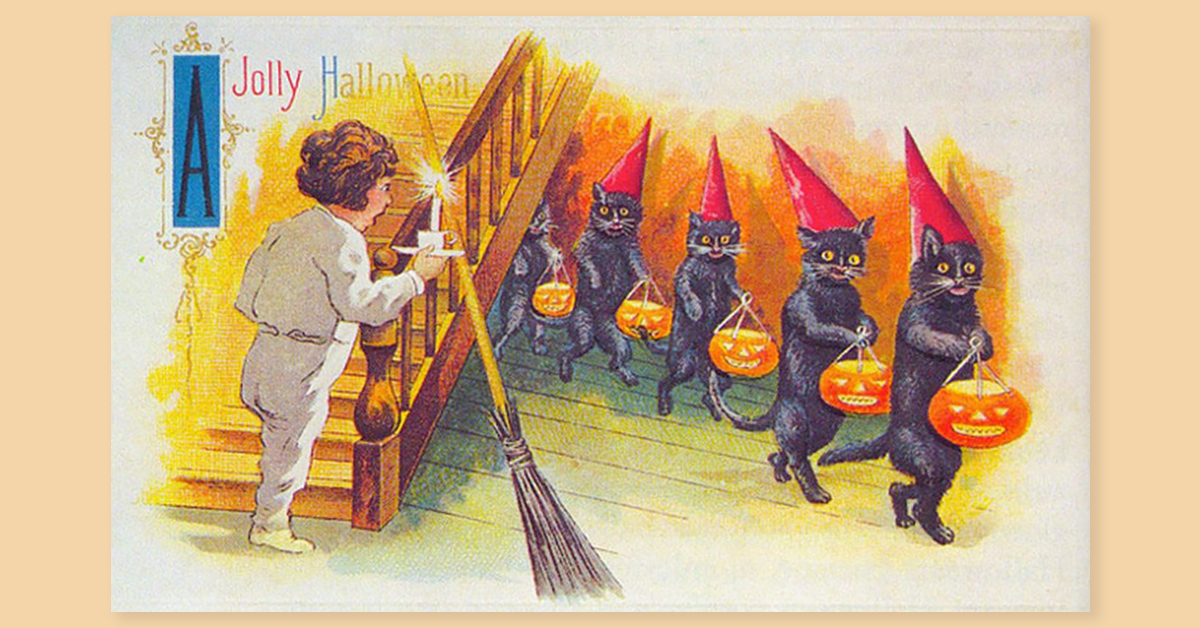
Today’s Morning Buzz is brought to you by Warren Kagarise, digital engagement manager for King County, WA. Connect with Warren on LinkedIn and Twitter.
What I’m Reading: Frightgeist, where Google Trends is tracking the top Halloween costumes for 2023. Get ready to see a lot of Barbies in the next 48 hours.
What I’m Watching: “Room 237” — a 2012 documentary about the symbolism in “The Shining” that’s chock full of interpretations about director Stanley Kubrick’s vision for the film.
What I’m Listening To: ELGL Board Chair Maggie Jones’s recent appearance on the GovLove Podcast, where she discusses the state of ELGL and how to get the most out of your membership.
If you’re stockpiling individually wrapped candy bars and your yard is now home to Lewis the talking pumpkin ghoul, you owe a fun-size debt of gratitude to Elizabeth Krebs — and a local government.
In the late 19th century, Halloween in the United States carried a reputation for mischief, as young people marked the occasion with pranks and vandalism. Some local officials considered banning the holiday to curb the damage.
Halloween’s transformation from free-for-all to family-friendly is often credited to Krebs, a civic leader in Hiawatha, KS, and someone on the receiving end of too many Halloween pranks. As founder of the Hiawatha Garden Club, Krebs grew frustrated after Halloween revelers kept wrecking her prized flower beds.
So, she hatched the idea for a community Halloween celebration and approached the Hiawatha City Council for support.
“On presentation of the matter by Mrs. Krebs the council pledged its hearty co-operation with the Civic Improvement club to arrange for a sane Hallowe’en to organize a special entertainment for the young people to take the place of the usual rough pranks and disturbances of and injury to property,” according to the Hiawatha Daily World on Oct. 22, 1912. (A call for a “sane” holiday is a recurring theme in the newspaper’s Halloween coverage over the years.)
The main reason for the official support stemmed from a desire “to check the playful yet unlawful pranks that usually result in much damage to the property of citizens of our city,” noted the Hiawatha Daily World. The council passed a resolution supporting the Halloween celebration and agreed to bring in extra police for the event.
The newspaper showed much more interest in Halloween — or Hallowe’en as it was written then — than the other council business, even though the meeting adjourned early so councilmembers could accompany the fire chief to a nearby blaze.
View this post on Instagram
“The Mardi Gras at New Orleans won’t be any better than Hallowe’en in Hiawatha,” enthused the Hiawatha Daily World.
The next day the newspaper doubled down on the call for a more orderly holiday: “Let’s have a fine, lawful time — wear masks, throw confetti, march up and down the street, mingle with one another.”
The celebration is known today as the Hiawatha Halloween Frolic. Hiawatha, now a city of about 3,300 people, is proud to host what is billed as the oldest Halloween parade in the nation. The event is integral to the community’s identity, to the point where Kansas Gov. Laura Kelly proclaimed Hiawatha as Halloween Town. (You better watch out, St. Helens, OR.)
As the event caught on, Krebs evolved into a folk hero, with a “Drunk History” sketch devoted to the genesis of the Hiawatha Halloween Frolic.
And Halloween, a holiday with roots in the ancient Celtic festival of Samhain, started to take on the rituals we continue to celebrate today.
“A number of children went about town in grotesque costumes,” noted the Hiawatha Daily World following Halloween 1914. “In the early evening there were numerous witches and masked young folks on the business street.”
Today, Halloween is estimated to be a $12 billion industry in the United States. Also worth noting: The federal government recognizes only 11 national holidays; Halloween is not one of them.
What often gets glossed over in the many retellings is local government’s role. The important early support from the city council helped set up the Hiawatha Halloween Frolic for success.
I learned about the celebration from a recent episode of “Tasting History with Max Miller” focused on how Halloween grew into a quintessential American holiday. Props to Miller for sharing more about the city council’s role in the early Hiawatha Halloween Frolic.
(For the record, the vinegar candy sounds more like saltwater taffy than proto-Sour Patch Kids.)
As we learned from the Hiawatha Halloween Frolic, investing in your community can create positive impacts far beyond your city limits and lead other communities to follow your example. Such events also allow communities to reinforce unique identities and juice the local economy.
For local governments, embracing community events can also help improve public sentiment. Unlike hashtag holidays, Halloween comes with a low barrier. Almost everyone is familiar with the holiday, thanks in part to Elizabeth Krebs and the Hiawatha City Council.
